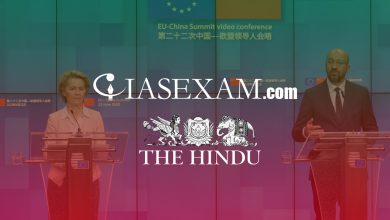The Hindu
A Hard Brexit
Breaking down the key features of the revised withdrawal agreement bill:
More than 40 months after the June 2016 referendum vote to leave the European Union, Britain will exit the EU on January 31. But nearly a fortnight since Prime Minister Boris Johnson’s landslide general election victory, Downing Street has scotched all speculation about a smooth transition out of the bloc a year hence. On Friday, the House of Commons voted 358234 for the Withdrawal Agreement Bill. The new version of the Bill has several key changes, of which three are particularly significant.
Changes with the new version of the Bill:
- A new clause outlaws an extension to the standstill transition period that would expire on December 31, 2020. The contentious step fulfils the Conservative Party’s election promise, and precludes the possibility of seeking any further extension beyond December 2020. Following the announcement, the pound slid 1.1% against the dollar relative to the gains after the election results, reviving market anxiety.
- The bill dispenses with the need for parliamentary approval, for the government’s negotiating mandate as well as the final agreement on the country’s future relationship with the bloc. The blueprint is to be ready by the end of February and the defining post transition agreement by November. The provision risks sidestepping normal democratic channels for industries and trade unions to influence the shape of their future trading relations with the EU, worth an estimated £90 billion.
- Guarantees on labour rights previously included in the withdrawal bill have been removed. This vindicates skeptics’ fears about a drift to a low tax, low regulation U.K. economy after Brexit. EU leaders have described Mr. Johnson’s cramped time-table as highly problematic to finalize a zero tariffs, zero quotas free trade agreement. Brussels is wary of granting these concessions to a major economy such as Britain. In exchange for any flexibility, the EU insists on a close regulatory alignment and a level playing field on state subsidies, competition policy, and labour and environmental rights to safeguard its single market. Such demands are at odds with the Eurosceptic vision of Britain wresting control of its laws and borders. In any case, a narrow ‘goods only’ deal excluding the large services sector from any agreement would deprive Britain of the benefits from its preeminence in financial and digital services. If no agreement is within sight by this time next year, a cliff edge exit on WTO terms is a very real possibility.
Challenges Ahead
- Under the terms of withdrawal, Northern Ireland will continue to remain within the EU jurisdiction after Brexit. The government will enforce customs checks for goods traded across the Irish Sea to the rest of the U.K., increasing costs for the bulk of small enterprises.
- The regulatory divergence within U.K. territory is the compromise London has conceded to protect the EU’s single market. The arrangement would maintain the existing soft border between Northern Ireland and the Republic of Ireland, which has underpinned the region’s tenuous peace since the 1998 Good Friday Agreement.
- The new scenario could strengthen demands in Belfast for unification with Dublin, potentially imperiling the U.K.’s constitutional integrity. Brexit has strengthened calls for a second referendum on independence by the Scottish National Party, which won a big majority in the UK elections. Mr. Johnson faces challenges on many fronts.





.png)



